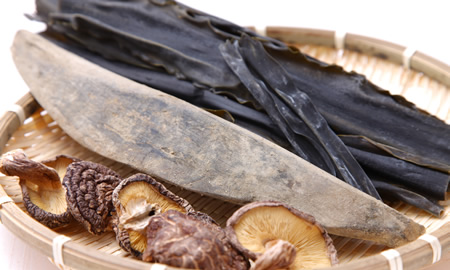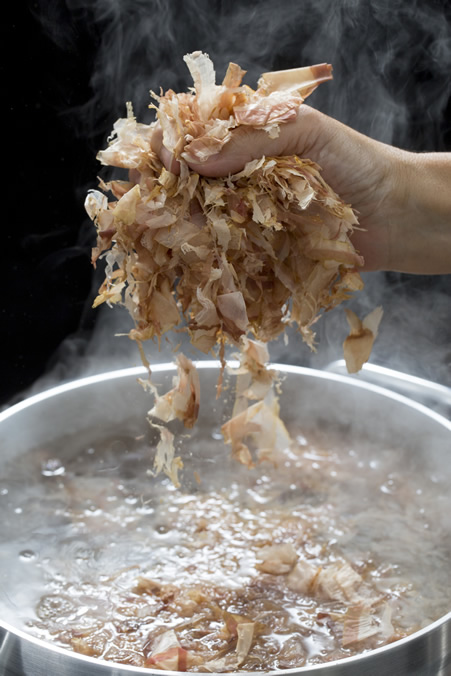Essiential Ingredients of Japanese Food - Umami

Umami
Playing a supporting role in Japanese cuisines that are as important as main casts
What is ‘umami’?

The word “umami” has now become popular as it is published even in overseas dictionaries. ‘Umami’ is an expression of one of basic tastes including sweetness, sourness, saltiness, and bitterness. It originally refers to glutamic acid and inosinic acid.
In 1908, a scientist called Kikunae Ikeda found glutamic acid in konbu kelp. Then in 1913, Shitaro Kodama discovered inosinic acid in bonito flakes, which was followed by a discovery by Akira Kuninaka of guanylic acid in 1957. These acids, considered to be factors of umami, have been successfully found by Japanese people because they all are used for making Japanese flavored broths, and it has been said that these scientists would have known, from their experience, there are factors in Japanese cuisines other than salt and sourness that create a great taste.
Soup stocks are vital to create the depth of Japanese cuisines.

Soup stocks are the origin of the nutrition and deliciousness of Japanese cuisines. Similar to fonds, bouillon and consomme in French, it is easy to make it. Japanese soup stocks can be made by leaving kombu kelp and dried shiitake mushrooms in water or pouring boiled water over bonito flakes, while fonds and boullion are made after boiling bones and vegetables for few hours. Yet, the flavor of meals differs widely depending on if the soup stocks are used or not. This is all thanks to the “umami” factor, which is found in the ingredients of the stocks.
Moreover, the typical ingredients of Japanese soup stocks including bonito flakes, kombu kelp, and dried shiitake, are used in different ways in different regions, which is the reason that Japanese cuisines are regarded as very fine yet have a great depth even though it has a great range of variations.
Umami and Japanese seasoning

Other than the soup stocks, the following five seasonings are essential to cook Japanese meals. The seasonings are soy sauce, miso, sugar, salt and vinegar. Especially soy sauce and miso, which contain umami taste, are Japan’s original seasonings. Their umami factor is born in the process of fermentation. Soy sauce and miso are made anywhere in Japan and they show clear uniqueness of local areas. In eastern Japan, their soy sauce and miso have dark color and strong taste. Those from western Japan are light color and gentle texture, while people in the Kyushu region prefer those with strong sweetness.
